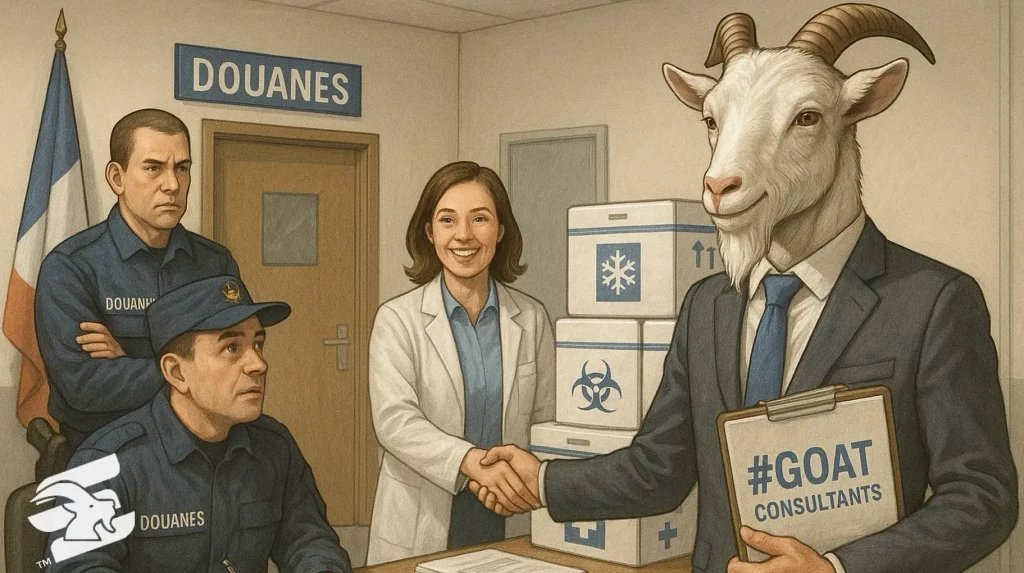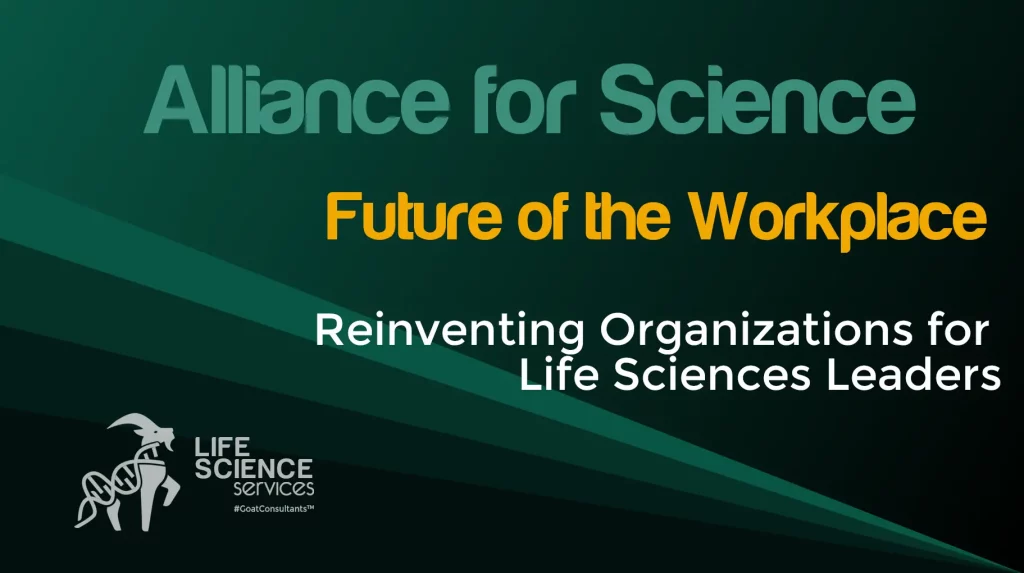
The Urgency of Reinvention
Our previous article, The Employee Engagement Crisis in Europe, revealed that just 13% of European workers feel connected. We explored why disengagement has become one of the biggest barriers to productivity and innovation. Today, Gallup’s data shows that the majority of employees are either detached or actively disengaged. The result: wasted energy, high turnover, and a management model that no longer works.
Reinventing Organizations for Life Sciences Leaders, continues the conversation by focusing on the future of the workplace. Traditional organizations, with rigid hierarchies and outdated HR practices, cannot keep pace with today’s complexity. Reinvention is no longer optional, especially for life sciences leaders managing biotech scale-ups, pharma operations, and medtech supply chains.

The Current State: Why Legacy Models Fail
Traditional companies perfected bureaucracy and now struggle to escape it.
Org charts define structure.
Every person fits neatly into a box with a title, reporting line, and narrowly defined scope. The implicit assumption: executives think, while employees execute. Yet how much time do teams waste preparing slide decks that take days to craft but receive only minutes of executive attention? And how many meaningful decisions come out of these rituals?
Middle management as compliance.
Middle managers spend more time reporting upwards and controlling downwards than enabling performance. This “squeezed layer” exists to obey superiors and keep subordinates under control. Unsurprisingly, many feel trapped in roles that add little value yet are seen as mandatory steps for career advancement.
Replicable processes breed rigidity.
Standard operating procedures (SOPs), budget cycles, and committees were designed for predictability. In practice, they create inertia. Teams spend months aligning to budgets instead of responding to opportunities. Leaders cling to the illusion of “predict and control” while reality demands “sense and respond.”
HR practices disconnect people from purpose.
Job descriptions overflow with buzzwords. Candidates are encouraged to tailor CVs to match them, perpetuating a game of appearances. Employer branding focuses on slogans rather than authentic engagement. Instead of building wholeness, the process invites exaggeration and distrust.
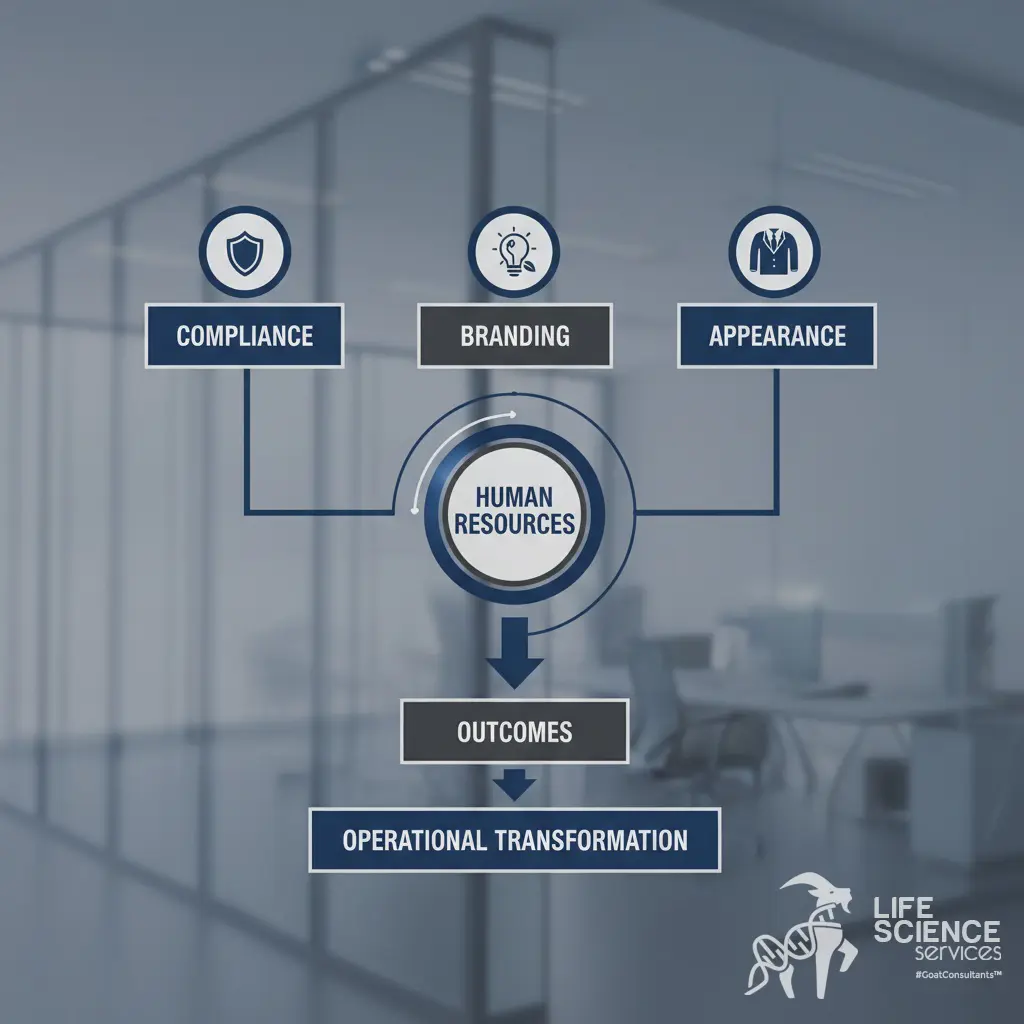
Optimizing life sciences HR: Bridging compliance, branding, and appearance to drive operational transformation.
Research confirms the problem. Studies of organization design show that rigid structures often create “misfits” between internal processes and external demands . These misfits reduce performance, hinder innovation, and ultimately disengage employees.
From Predict-and-Control to Sense-and-Respond
The machine metaphor still dominates traditional organizations. Leaders plan at the top; execution happens at the bottom. But as Laloux highlights, this model fails in complex environments.
Budgeting is a prime example. Huge effort goes into producing numbers that quickly become obsolete. Once approved, managers spend the year defending the budget rather than spotting opportunities. What feels like control is an illusion.
Modern research echoes this shift. Joseph and Sengul describe how organizations must continuously realign structures to match changing conditions . Fit is not static; it requires dynamic adjustment.
In contrast, Teal organizations operate more like living systems. They accept that complexity cannot be controlled, only sensed and responded to. Rather than perfect planning, they pursue workable solutions, continuously revisited as new information emerges. This adaptive mindset is the foundation of the future of the workplace.
Future Of The Workplace: Teal Principles in Action
Frederic Laloux identifies three breakthroughs of Teal organizations that define the future workplace:
1. Self-management.
Hierarchies flatten. Teams make decisions collectively through transparency, feedback, and polls. Headquarters evolve into coaching and support centers, offering administrative help rather than rules. Objectives and even compensation are set collectively. Autonomy fosters accountability.
2. Wholeness.
Traditional companies demand conformity. Employees wear a “professional mask” that hides vulnerability and authenticity. Teal organizations encourage employees to bring their full selves. Emotional and spiritual dimensions matter alongside rationality. Practices like check-ins, peer coaching, and open dialogue create safe spaces for empathy and creativity.
3. Evolutionary purpose.
Instead of “change management,” which induces fear, Teal organizations embrace “evolution management.” They improve what exists rather than break it. By engaging stakeholders through workshops, transparent communication, and feedback loops, they create momentum for progress.
Frederic Laloux’s “Reinventing Organizations” points the way. His concept of “Teal Organizations” throws out the rigid top-down hierarchy in favor of three principles:
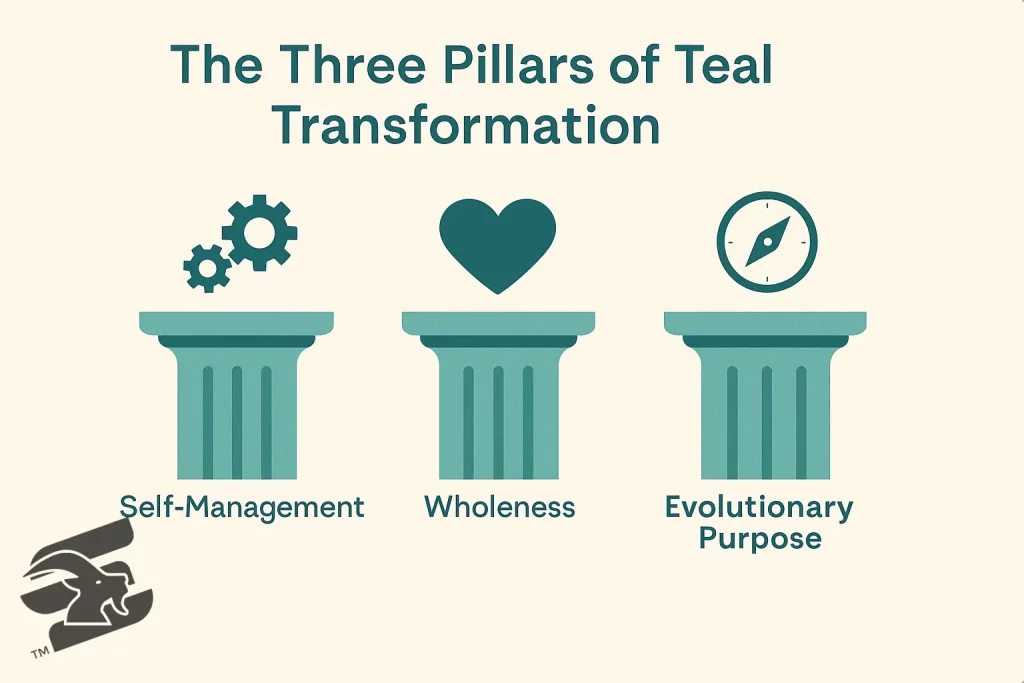
These principles are not theory. They are proven in practice:
- Buurtzorg transformed home care in the Netherlands with small, self-managed nursing teams, achieving higher satisfaction at lower costs.
- FAVI, a French brass foundry, delivers unmatched on-time performance without hierarchical controls.
- Morning Star, the world’s largest tomato processor, operates without bosses, relying on peer agreements and shared responsibility.
These cases show that the future of the workplace is not a utopian dream. It is already here and it is outperforming traditional models.
Rethinking Leadership and Middle Management
Gallup’s 2025 State of the Global Workplace report shows that middle managers are among the most disengaged employees. Many resent their roles, feeling crushed between pressure from above and resistance from below. Their frustration spreads, dragging team morale and performance down.
The solution is not to eliminate leadership but to redefine it. In future-ready organizations, leaders are coaches and mentors. Their role is to inspire, support, and enable delivery. It is not to control.
Respect, influence, and skills replace titles and reporting lines as sources of authority. Recognition flows from contributions, not hierarchy. Transparency ensures accountability without bureaucracy.
This evolution also addresses a long-standing problem in life sciences: the assumption that promotion must lead to management. Flattened hierarchies allow technical experts to advance without being forced into ill-fitting managerial tracks.
Masculine vs Feminine Energy in Organizations
Another shift concerns the dominant energy within companies.
Traditional organizations embody masculine traits: decisiveness, determination, and action. Decisions rely on facts, data, and rational arguments. While valuable, this approach often ignores the emotional realities of work.
Teal organizations embrace feminine energy: reflection, empathy, and vulnerability. Decision-making still includes rationality but adds an emotional and spiritual layer that data cannot capture.
Balancing both energies creates humane workplaces. Instead of criticizing a colleague who arrives late due to childcare, employees step into their shoes and empathize. This shift fosters resilience and trust which are critical assets to thrive in complex environments.
Masculine vs. Feminine energy in life sciences leadership: Balancing analytics, structure, collaboration, and adaptability.

Practical Pathways for the Future Of The Workplace
How can organizations move toward the future workplace without triggering fear?
- Use stimulation games rather than rigid targets. Instead of commanding “increase by 10%,” frame progress as a challenge: “Can we improve on last quarter’s results?”
- Create feedback loops. Polls, workshops, and open forums give employees ownership of decisions.
- Communicate transparently. Honesty about challenges and objectives builds trust.
- Frame as evolution, not change. Improvement feels safer and more engaging than disruptive transformation.
These steps shift the focus from compliance to participation. This is the essence of the workplace of the future.or organizational innovation. But it needs courageous leadership and structural redesign.
Implications for Life Sciences Leaders
For life sciences executives — from biotech founders to pharma COOs — the stakes are even higher. Scaling biotech operations, optimizing medtech processes, and navigating regulatory complexity demand agility. Traditional bureaucracies cannot keep pace.
Adopting Teal principles offers a path to:
- Operational resilience in volatile supply chains.
- Engaged teams motivated by autonomy and purpose.
- Continuous adaptation in highly regulated environments.
In short, the future of the workplace is directly tied to the success of life sciences organizations. Those that embrace self-management, wholeness, and evolutionary purpose will not only retain talent but also accelerate innovation and growth.
#GOATConsultants™-Level Insights:
The current management model is broken. Employees are disengaged, middle managers are frustrated, and bureaucracies waste more energy than they create.
The future of the workplace is about reinvention — moving from machines to living systems, from predict-and-control to sense-and-respond. Teal principles show us that it is possible to build organizations where people thrive, innovation flourishes, and performance soars.
Life sciences leaders face a choice: cling to outdated hierarchies or embrace evolution. The time to reinvent is now. Episode III will continue this journey by exploring how technology and AI intersect with human-centric organizational design.

Enjoy Our Success Stories:
- VAT Compliance Failures Nearly Cost Biotech Millions
- Biotech customs compliance: How we saved €800K in life-saving medicine
- VAT Compliance As An Asset: How We Turned €250K into €1.9M – 660% ROI
- You cost a Customer One Million Euro in VAT penalty
- How we cut €100K/year in VAT compliance costs
- How we recovered €800K from German VAT authorities
